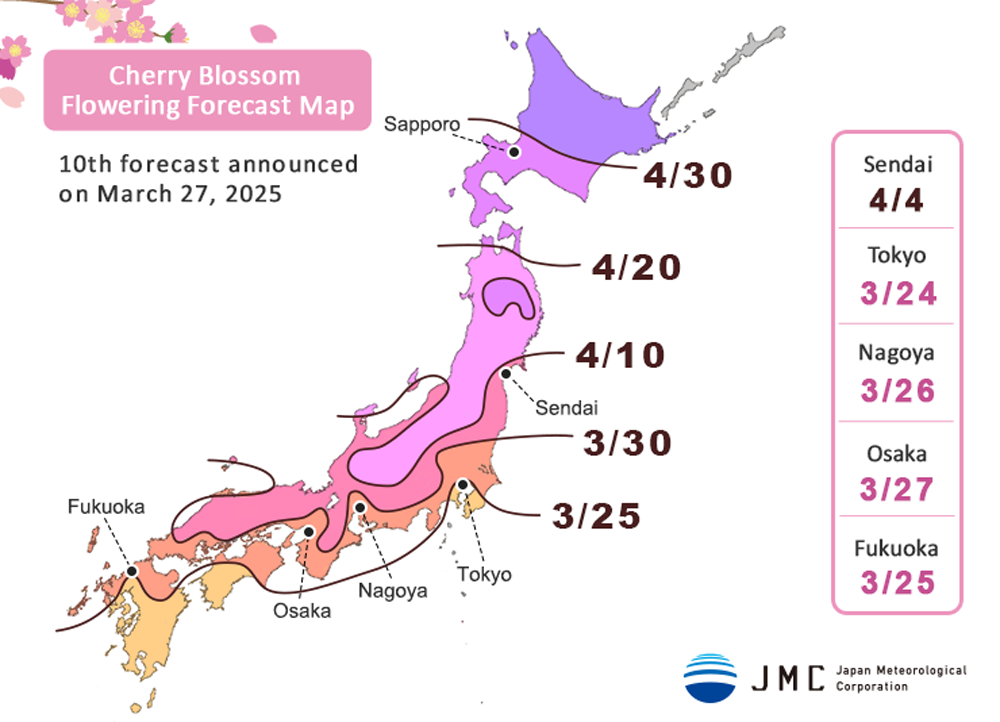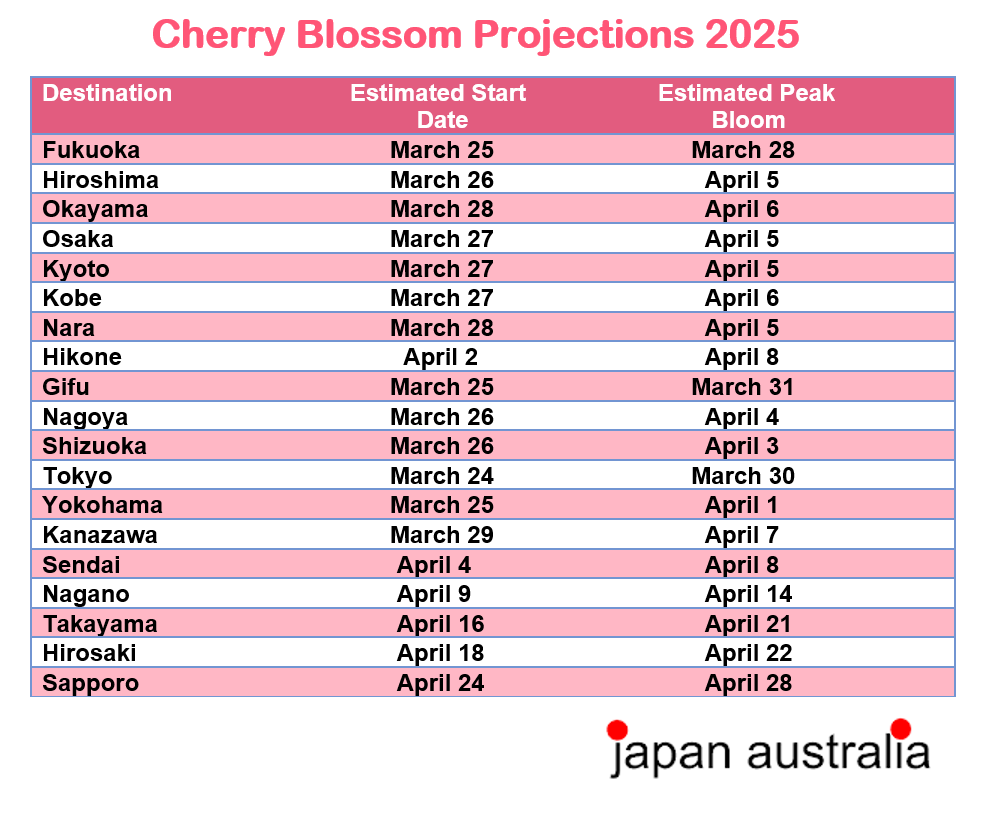Start planning your sakura trips and hanami parties for the top cherry blossom destinations in Japan with the Japan cherry blossom forecast for 2025. It is time to start looking ahead to the warmer weather of spring which can mean only one thing – cherry blossoms.
Cherry Blossom Season in 2025
This year’s cherry blossom (sakura) forecast for Japan is expected to open on average nationwide. Warmer temperatures from October 2024 to November 2024, have delayed the dormancy-breaking period by about a week. However, with temperatures across Japan from January to March expected to be around the same as usual, or slightly above average, the flower buds are expected to develop well, consequently leading to a bloom roughly the same as in a typical year.
The cherry blossom season typically starts in January in Okinawa and sweeps up the mainland to Hokkaido in May. The cherry blossoms in Japan usually last about 2 weeks from the start of their bloom to full bloom. The peak season for cherry blossoms in popular sightseeing destinations such as Tokyo, Kyoto and Osaka is usually from late March to early April.

First Bloom and Full Bloom 2025 Forecast
Warmer temperatures in early and mid-March will bring the arrival of the cherry blossom season on par with the seasonal average.
The cherry blossoms have reached peak viewing in Tokyo, Yokohama, Nagoya, Nara, Hiroshima, and Fukuoka.
The blossoms are opening in Kyoto, Osaka, and Kanazawa. Kyoto is expecting full bloom (peak viewing) around April 5 with Osaka also around April 5. Kanazawa should reach full bloom around April 7.
On March 27, 2025, JMC (Japan Meteorological Corporation) released its 10th Japan cherry blossom forecast for the current season. The cherry blossoms in 2025 are predicted to bloom close to their average timing from the Kanto region westward. In northern Japan, they are likely to bloom earlier than usual.

This forecast is based on the Somei Yoshino cherry blossom tree, which is considered to be the most popular variety of Sakura in Japan.
We have created a table below for the major cherry blossom destinations in Japan with the estimate start date and peak bloom of the cherry blossoms. This forecast is subject to change and is only a prediction based on long term forecasts for February and March. Please refer back to this page for regular updates and reports. Information from the Japan Meteorological Corporation.



